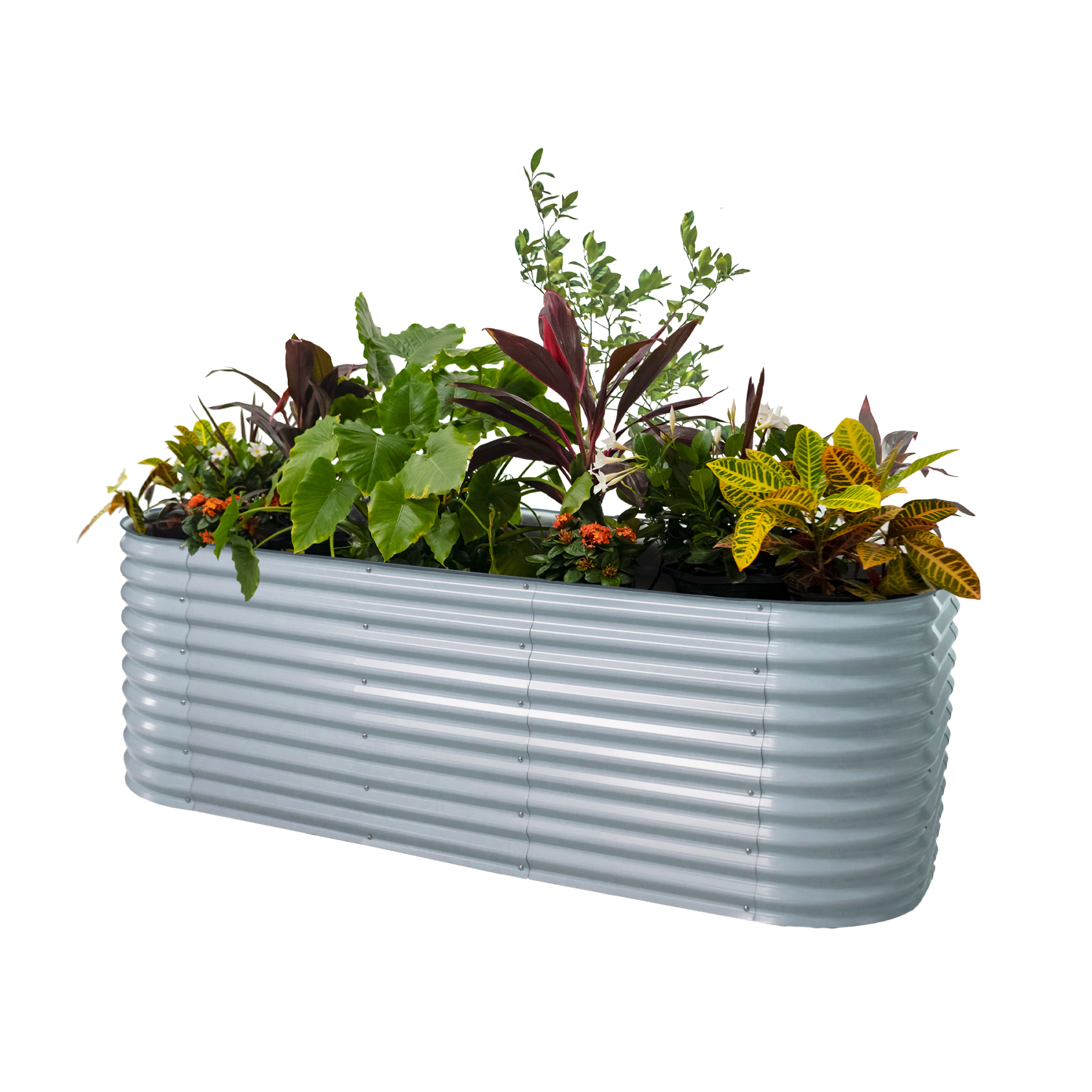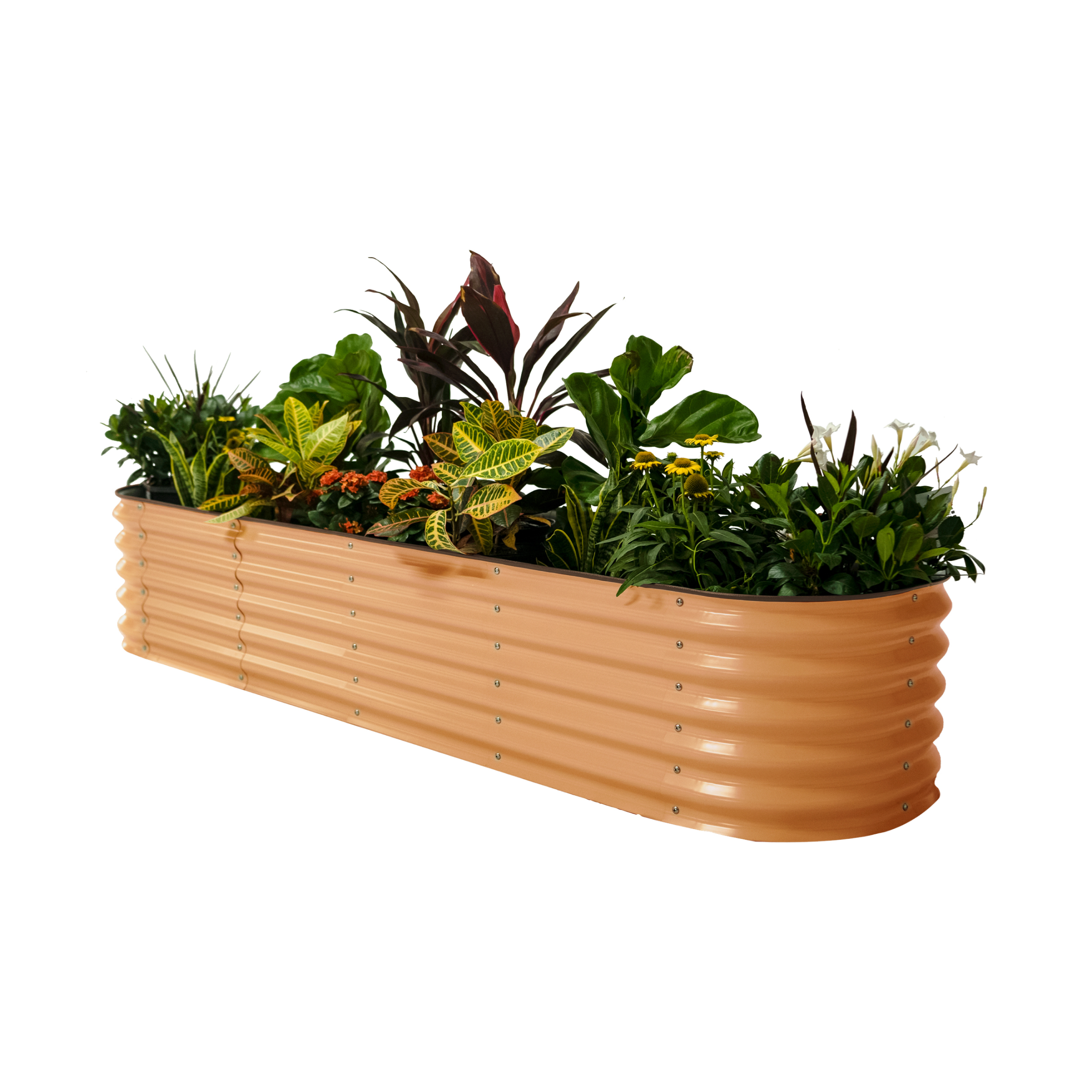Do Raised Garden Beds Need Drainage?
Before building or buying garden beds, consider how raised garden bed drainage can make a difference for your soil and plants.


There are many good reasons to grow plants in raised garden beds. One of the most important is that they offer better drainage than most standard beds. The elevated design minimizes pooling water and the ability to control soil quality and content means you can create the perfect blend for good drainage. Although raised garden bed drainage is naturally good, certain steps can improve it even more.
Why Do Raised Garden Beds Need Drainage?
Wherever you grow plants, they need good drainage. The exceptions to this, of course, are plants that grow in marshes or water. Most plants need soil that drains well. Standing water around roots suffocates them by not allowing them access to oxygen. Soggy soil and standing water also put plants at risk for rot and disease.
Raised bed garden drainage is already an improvement on a standard bed in the ground. You can still improve it even more with the right choices. This is important because even with elevation and a good soil mix for raised beds, drainage may not be good enough.
How to Boost Drainage for a Raised Garden Bed
There are several things you can do during the construction and planting of your raised beds to maximize drainage:
1. Choose the Right Location
Before you even begin, choose the best spot for raised beds. Avoid low areas of your garden, which tend to collect water. Watch what happens after a big rain to find areas that tend to drain well and don’t have standing water. Balance the need for drainage with a location that gets enough sunlight.
2. Make the Perfect Soil Mix
Next, build good soil. Soil is one of the factors that has the biggest impact on drainage. You can buy bags of good quality garden soil or potting mix to use for your raised beds. Or, if you have extra soil in your garden, you can add materials to it for a good blend. Mix compost into the soil and add something that boosts drainage, like perlite, vermiculite, or peat moss.
3. Add Layers
Using just an excellent soil mix will provide your bed with good drainage, but adding layers can improve it even more. Place some loose organic material in the bottom of your bed. This could be twigs and leaves, wood chips, or even lawn clippings. This fills up some of the space and allows for more drainage at the bottom.
Sign up for the Gardening Know How newsletter today and receive a free copy of our e-book "How to Grow Delicious Tomatoes".
Layer some high quality compost on top of the loose organic material. Finally, add about 12 inches (30 cm) of your perfect soil blend on the top.
4. Cut Drainage Holes
If you feel like your beds are not draining enough, even with layers of organic material and good soil, you make holes in the sides of the bed. Drill or cut holes or vertical slits that allow extra water to drain out of the sides of the bed.
5. Create a Slope
When constructing your raised bed, include a slight slope to allow water to drain from the bed. The slant can be from one end to the other or from the center of the bed outward. Aim for a slope of 2%. This is about one-quarter of an inch (0.6 cm) drop per foot (30 cm) of distance.
6. Maintain Your Raised Beds
Once you have created raised beds with excellent drainage, you can focus on maintenance. Aerate the soil once in a while to allow more oxygen to get to roots and to prevent compaction, which can reduce drainage.
Wooden beds are a popular choice, but they decay over time. If you don't want to replace the wooden boards with new ones, consider a pre
This article features products available from third-party vendors on the Gardening Know How Shop.

Mary Ellen Ellis has been gardening for over 20 years. With degrees in Chemistry and Biology, Mary Ellen's specialties are flowers, native plants, and herbs.


